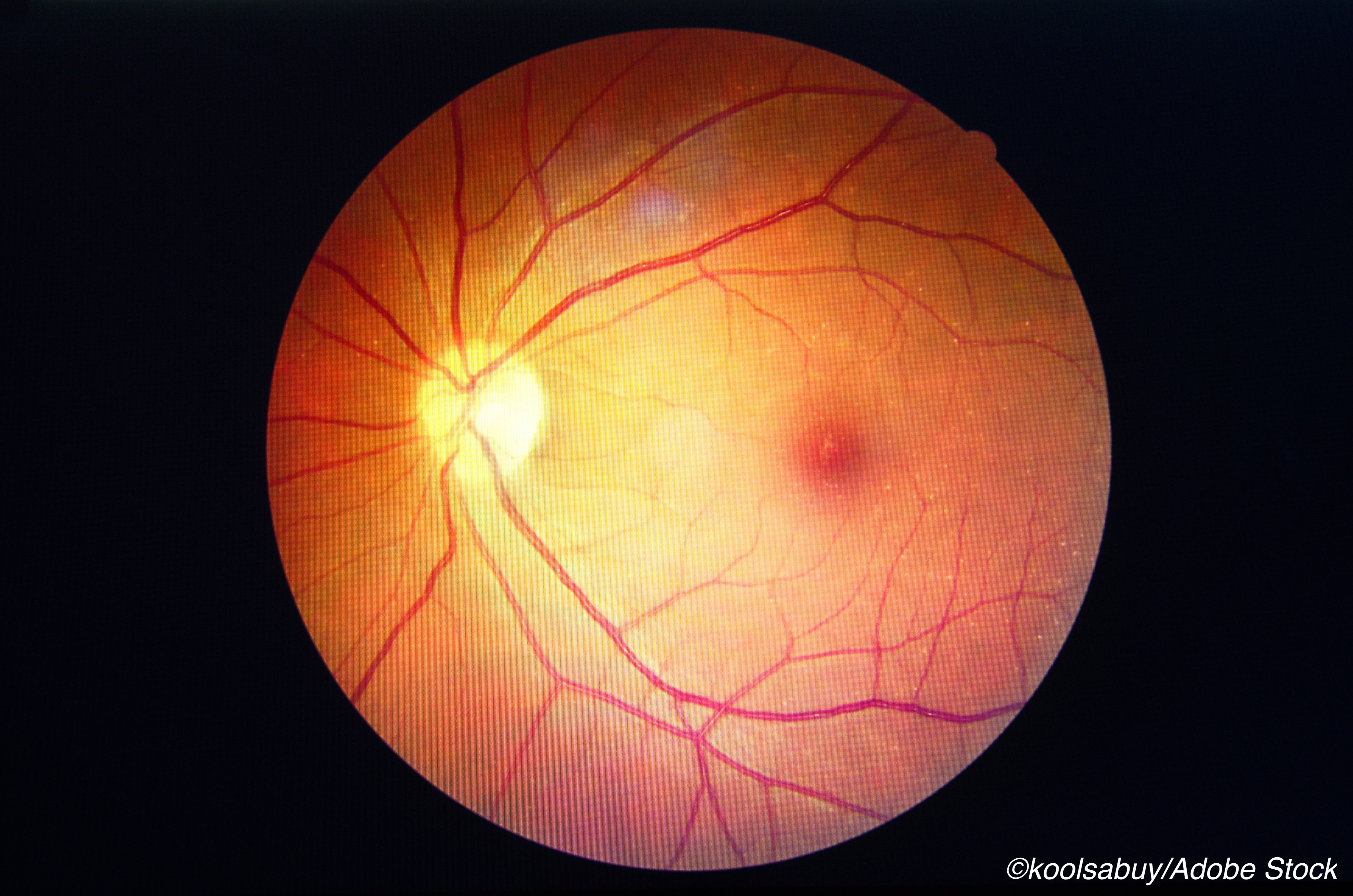 Both aflibercept—an anti-VEGF agent—and vitrectomy with panretinal photocoagulation are equally effective for the initial treatment of vitreous hemorrhage from proliferative diabetic retinopathy, according to study results from the DRCR Retina Network, which were published in JAMA. But a full one-third of patients needed both anti-VEGF injections and surgery to maintain benefit.
Both aflibercept—an anti-VEGF agent—and vitrectomy with panretinal photocoagulation are equally effective for the initial treatment of vitreous hemorrhage from proliferative diabetic retinopathy, according to study results from the DRCR Retina Network, which were published in JAMA. But a full one-third of patients needed both anti-VEGF injections and surgery to maintain benefit.
“Vitreous hemorrhage from retinal neovascularization is a frequent occurrence of proliferative diabetic retinopathy and can cause acute, severe vision loss,” wrote researchers from the DRCR Retina Network, led by Andrew N. Antoszyk, MD, of the Charlotte Eye, Ear, Nose & Throat Associates, Charlotte, North Carolina.
For this randomized clinical trial, these researchers included 205 adults (mean age: 57 years; 56% men) with vision loss (mean visual acuity letter score: 34.5) caused by vitreous hemorrhage from proliferative diabetic retinopathy from 39 DRCR Retina Network sites in North America.
Patients were randomized to treatment with aflibercept (n=100; four monthly injections; mean number of injections: 8.9) or vitrectomy with panretinal photocoagulation (n=105).
At 4 weeks, the mean visual acuity letter score in the aflibercept group was 52.6 (Snellen equivalent: 20/100) compared with 62.3 (Snellen equivalent: 20/63) in the vitrectomy group. (adjusted difference: −11.2; 95% CI: −18.5 to −3.9; P=0.003).
Over 24 weeks, the mean visual acuity letter scores were similar in both groups. In those treated with aflibercept, the mean visual acuity letter score was 59.3 (Snellen equivalent: 20/63; 95% CI: 54.9-63.7), and in those treated with vitrectomy, 63.0 (Snellen equivalent: 20/63; 95% CI: 58.6-67.3), for an adjusted difference of −5.0 (95% CI: −10.2 to 0.3; P=0.06). At 2 years, these scores increased to 73.7 (Snellen equivalent: 20/40) and 71.0 (Snellen equivalent: 20/40), respectively (adjusted difference: 2.7; 95% CI: −3.1 to 8.4; P=0.36).
Antoszyk and colleagues observed no significant between-group differences in 15 of the 23 secondary outcomes. Notably, eyes treated with vitrectomy compared with aflibercept had a lower likelihood of recurrent vitreous hemorrhage (15% versus 49%, respectively) as well as less persistent neovascularization (3% versus 29%).
At 24 weeks, more eyes treated with aflibercept evidenced retinal neovascularization upon clinical exam compared with those in the vitrectomy group (29% versus 3%, respectively; adjusted difference: 25%; 95% CI: 15%-36%; P ˂ 0.001); the same was true at 2 years (23% versus 2%; adjusted difference: 20%; 95% CI: 11%-30%; P ˂ 0.001).
During the 2-year follow-up, both groups were permitted to receive aflibercept or vitrectomy, and 33 eyes (33%) assigned to aflibercept received vitrectomy while 34 eyes (32%) assigned to vitrectomy received subsequent aflibercept (mean: 2.3 injections over 2 years). Repeat vitrectomy was needed in 8% of eyes.
“During the last 2 decades, vascular endothelial growth factor (VEGF) has been shown to have a key role in the pathogenesis of diabetic retinopathy, and intraocular (intravitreal) injections of anti-VEGF agents have become standard care for patients with diabetic macular edema, supplanting focal or grid laser photocoagulation,” wrote Gavin Siew-Wei Tan, MD, PhD, and colleagues in an accompanying editorial.
Nevertheless, they maintained that these results do not show a clear benefit to initial treatment with aflibercept over vitrectomy for vitreous hemorrhage from proliferative diabetic retinopathy.
“At 2 years, approximately one-third of vitrectomy-treated eyes still required aflibercept injections, albeit at a low frequency of about 3 injections, and with a similar proportion of eyes with diabetic macular edema involving the center of the macula, which is clinically significant and would require anti-VEGF therapy. Thus, this new trial could not demonstrate clear benefits for an initial and sustained use of aflibercept versus vitrectomy with panretinal photocoagulation for the management of vitreous hemorrhage from proliferative diabetic retinopathy,” added Tan and fellow authors.
Although anti-VEGF injection may be a useful alternative for patients without access to vitrectomy and those who are not surgical candidates, Tan and colleagues argued that vitrectomy remain the standard of care in these patients.
“Overall, the current DRCR Retina Network Protocol AB trial provides no compelling evidence to change present management from vitrectomy to anti-VEGF therapy to clear vitreous hemorrhage for patients with proliferative diabetic retinopathy. Vitrectomy has a clear advantage in patients who require rapid visual rehabilitation with significantly better vision at 4 weeks. Anti-VEGF therapy is effective at transiently reducing neovascularization, but has little effect on the vitreous neovascular traction, does not accelerate physical clearance of vitreous hemorrhage, has little benefit on visual acuity during the early stages, and is associated with a higher rate of recurrent vitreous hemorrhage,” they concluded.
These DRCR Retina Network researchers acknowledge that the study may have been unpowered to detect clinically relevant benefits in favor of initial vitrectomy with panretinal photocoagulation due to lower retention of patients in the vitrectomy group at 2 years. Other limitations include the unmasked allocation to treatment due to the nature of the treatments, the non-generalizability of these results to other anti-VEGF agents, and the failure of researchers to address visual outcomes or durability of neovascularization regression beyond 2 years.
-
Drug treatment with the anti-VEGF agent aflibercept leads to similar outcomes in visual acuity over 2 years compared with surgical treatment with vitrectomy in patients with vitreous hemorrhage caused by proliferative diabetic retinopathy.
-
Both treatments improved central vision in most patients, but one-third needed both anti-VEGF injections and vitrectomy to maintain long-term benefits.
E.C. Meszaros, Contributing Writer, BreakingMED™
This study was funded through a cooperative agreement from the National Eye Institute, the National Institute of Diabetes and Digestive and Kidney Diseases, the National Institutes of Health, and the US Department of Health and Human Services. Regeneron Pharmaceuticals Inc. provided aflibercept for the study and funds to DRCR Retina Network to defray the study’s clinical site costs.
Antoszyk has received grants from Roche Genentech and acts as a consultant for the Jaeb Center for Health Research, Opthea, Clearside, Roche Genentech, Regeneron, and Novartis.
Tan has received consulting fees from Alcon, Allergan, Bayer, Novartis, and Santen.
Cat ID: 240
Topic ID: 92,240,730,12,13,669,918,240


